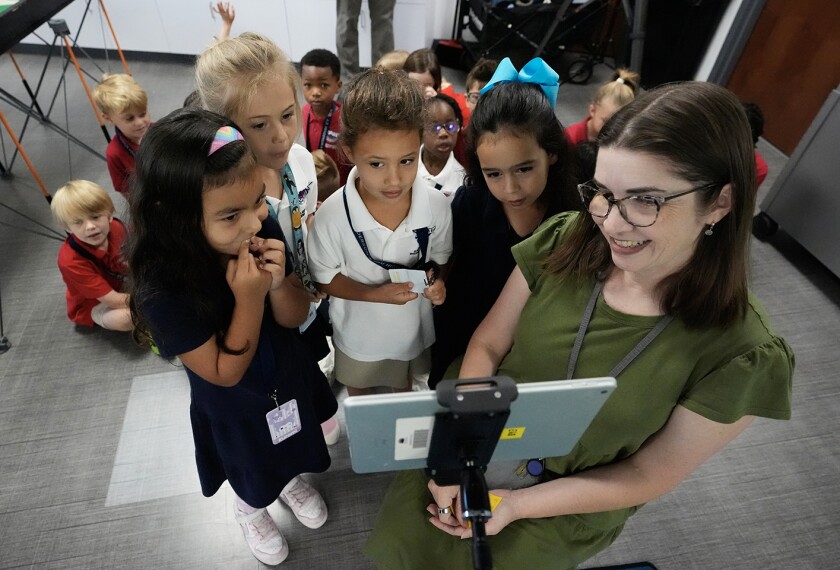Working in public education is a political act. As educators, we are government employees with the privilege of contributing to the academic, personal, and social development of students. Most of us joined this profession because of our deep commitment to students and learning.
But in the last 25 years, the discourse of education has shifted from teaching, critical thinking, collaborative work, equity, and social justice to the learning of survival techniques, including drills and other strategies for responding to rampage shooters.
Public educators act in loco parentis in our hearts and, effectively, in our legal responsibility. As a high school principal, I believe there is no more important or rewarding career than working as an educator. We are protective of our students and feel deeply the responsibility we have to parents and guardians who trust us with their precious family members; and yet, we cannot stop a bullet.
Teachers and schools provide social-emotional learning, career technical education, extracurriculars, curriculum, and instruction in core subjects, as well as in the arts and PE. We offer guidance for postsecondary options, global-minded sensibilities, and more to students. Much of what we teach is guided by local and state government, as are the rules and requirements regarding what is broadly named “school safety.”
The 2022 Education Commission of the States reports that as of 2019, 44 states and the District of Columbia have statutes requiring schools to create a school safety plan. In California, where I am from, the plan includes a requirement that schools “develop strategies and policies to prevent and respond to potential incidents … [including] ... active assailants/intruders.”
It is now common to describe teachers’ work as being “on the front lines.” Militaristic phrases like that indicate the transformation of our professional identities from joyful work to that of “first responders” and “incident commanders.”
Educators are experiencing the reality that teaching and learning are no longer our priorities. Our professional development now includes how to barricade a door, quickly close the blinds, silence terrified students, and make sure the red bucket in the classroom is available to hold human waste.
Even the most highly trained active-shooter responders are human beings—as evidenced by the Secret Service’s failure to prevent an assassination attempt at former President Donald Trump’s recent rally in Pennsylvania. Human beings have simply not been able to prevent horrific massacres in the face of automatic weapons. It is incredible that anyone would expect teachers to do better.
The fact is the accessibility of guns places us on the front line against rampage shooters. This violent possibility is foremost in our minds as we schedule mandatory “active shooter,” “code red,” and “shelter in place” drills and training.
There is a reason to feel the need to be prepared. According to Everytown, there have been at least 117 incidents of gunfire on school grounds so far this year nationally, resulting in 32 deaths and 65 injuries. By the time you read this, the number may have grown.
For a school leader responsible for children, teachers, and staff, the pressure to assure everyone that they are safe while at school is almost crippling. Parents, students, and staff ask for police officer training, special locks for classroom doors and windows, window coverings, student profiling, and other “protections” from rampage shootings. The emphasis that should be placed on teaching and learning has been replaced with an emphasis on survival techniques in the specter of gun violence.
As a nation, we must demand public safety policies to reduce gun violence that include bans of assault weapons and high-capacity magazines and the creation and enforcement of waiting periods, background checks, responsible gun-ownership laws, and other sound legislation.
Just one child being shot and killed at a school should be enough to motivate legislators to act. Tragically, the shocking rampage shooting at Columbine in 1999 was just the start. In 2012, we witnessed 20 6- and 7-year-olds massacred at Sandy Hook Elementary School in Connecticut. In 2022, 19 elementary schoolchildren were killed in Uvalde, Texas.
The massacre of those children, whose parents dropped them off, trusting they would be safe with us, has still not been enough to enact even common-sense gun reform laws. Since legislators have not done enough to change gun laws, we must act.
It is time for administrators to partner with teachers to get the attention of the state and local legislators and voters. Together, we must take action to change the discourse of education. As education leaders, we cannot continue to pretend we can drill and practice our way to student safety from rampage shooters.
Administrators and education leaders must:
- Openly advocate gun reform;
- Share their positions on gun reform with their school board to build coalition and show that school boards have a place in advocating the safety of their stakeholders;
- Urge the district to have a gun reform statement on its website and post the same statement on each school’s website;
- Collaborate with their union, if they have one, on joint advocacy for gun reform;
- Include conversation about gun reform in staff trainings on safety drills to bring awareness to alternatives to accommodating current gun laws;
- Join organizations such as Everytown.org to support initiatives for gun reform; and
- Use their position as a public school educator to write, call, and email local, state, and federal government officials to urge gun reform.
Going to school should not be so potentially deadly for students or teachers that we are prioritizing rampage-shooter drills over education. Let’s work collaboratively to demand change from our legislators to bring us back to learning and teaching without fear of becoming victims of gun violence. We need to act now to save the lives of our children, ourselves, and the educational profession.
Disclaimer: The copyright of this article belongs to the original author. Reposting this article is solely for the purpose of information dissemination and does not constitute any investment advice. If there is any infringement, please contact us immediately. We will make corrections or deletions as necessary. Thank you.







